|
|

 The
1980 presidential election The
1980 presidential election
 Reagan
– personal background Reagan
– personal background Attempted assassination of Reagan (March 1981) Attempted assassination of Reagan (March 1981) The
Air Traffic Controllers strike (August 1981) The
Air Traffic Controllers strike (August 1981)
 The Falklands War (1982) The Falklands War (1982) The
Lebanon crisis (1982-1984) The
Lebanon crisis (1982-1984)
 The
U.S. military intervenes in Grenada (October 1983) The
U.S. military intervenes in Grenada (October 1983)The textual material on this webpage is drawn directly from my work America – The Covenant Nation © 2021, Volume Two, pages 271-276. |

|
|
Going into the 1980 presidential election, America
was a greatly divided, even demoralized, nation. Part of the dark
spirit of the times was based on the economy's terribly poor
performance, thanks to the energy crisis – and the Volcker program
designed supposedly to "fix" the problem. Part of it was from the
humiliation Americans had been feeling concerning the country's
declining place in the international arena. And part of it was still
from the generational and intellectual class antagonisms running deeply
through the American culture. The Democrats re-nominated Carter as the
Democratic Party candidate, although Ted Kennedy had challenged Carter
for the privilege, using some very sharp language against Carter, which
left very bad feelings between the Carter and Kennedy wings of the
party. The Republican Party nominated ex-actor, ex-governor of California (1967-1975) Ronald Reagan. He embodied the "old virtues" that had been supposedly banished forever with the loss of the Republicans of the presidency four years earlier. He was visibly a Cold Warrior and tough on anyone he deemed divisive or corrosive of the national spirit. But it was just such toughness that a strong majority of Americans craved, after four years of Carter's "niceness." Reagan won the election easily, with 489 electoral votes (and 50.7 percent of the popular vote) to Carter's 49 electoral votes (and Carter's 41 percent of the popular vote). A third party run of a liberal Republican (Illinois Congressman John Anderson) took 6.7 percent of the popular vote but received no electoral votes, thus not crippling the Republican nominee Reagan, as some had feared. As one last humiliation delivered to Carter, on inauguration day (January 20th) just as he was turning the presidency over to Reagan, the American hostages who had been held captive in Tehran were finally released for return to the United States. Though Carter had been the one negotiating the release, the timing seemed to give Reagan the credit, for it occurred to many Americans that the Iranians might have released these prisoners out of a fear that Reagan might do something drastic to Iran. This was not likely the case, though one last humiliation of Carter by the Iranians certainly seemed to be part of the timing.
|
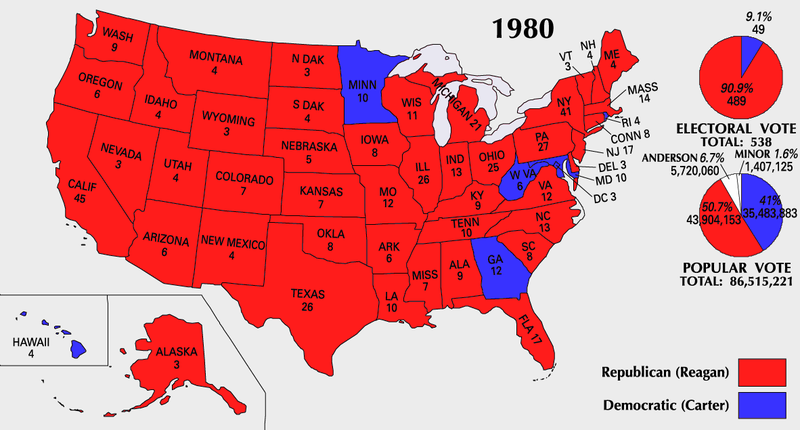
President Reagan taking the
oath of office in January 1981
The Reagans waving from the
presidential limousine during the Inaugural Parade – January 1981
A Reagan family portrait on the day of his inauguration January 20, 1981
The American hostages who had been held captive in Teheran
were finally
released for return to the United States
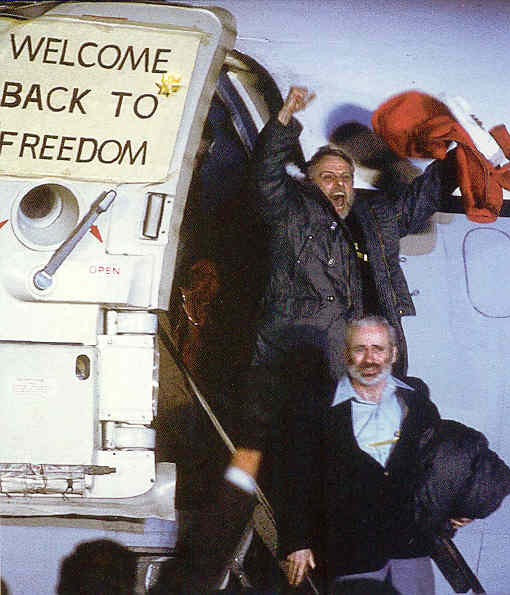
US hostages held in Iran
being returned to the States – January 1981
The Reagan Cabinet – early
1981
In front:
Secretary of State Alexander
Haig, Reagan, Bush, Secretary of Defense Caspar Weinberger
The woman in the center, U.N. Ambassador, Jeane Kirkpatrick
... one of my three Ph.D. Mentors at Georgetown University!

|
|
Reagan was born in Illinois to an Irish-Catholic father and a strongly Protestant (Disciples of Christ) mother … the latter whose Christianity would have a very strong impact in the way Reagan would grow up understanding the world and its ways. Also, as a youth, Reagan was very close to his Dixon, Illinois, pastor … and the pastor's daughter, whom he dated through high school and college. But when she went off to Europe after graduation, she broke off their engagement. Somehow this did not seem to have shaken his private Christian faith. But his church attendance dropped away to only infrequent visits, really never to recover until years later, after he left the White House. Reagan soon moved into the world of the media, first as a sports-radio announcer in Iowa for several years, then heading off to California in 1937, where a screen test opened up a contract with Warner Brothers, at first doing bit parts, but then moving up in importance in the roles he played. His leading role in the Knute Rockne movie (1940) brought him finally to stardom. When America went to war in 1941, Reagan was activated from his former status as a Second Lieutenant in the Reserves to active duty. He soon quite naturally found his way to the military's Public Relations operations (his poor eyesight would keep him from overseas service), making a huge number of public relations and training films and conducting war-bond campaigns. After the war Reagan was elected president of the Screen-Actors Guild, serving (1947-1952) during some of the most tormented time for the Hollywood film industry, as it came under Congress's close scrutiny for Communist tendencies. But he himself, being a fervent anti-Communist, tried to work with Congress to bring this issue to some kind of a healthy solution. This would introduce him to the world of politics, and all of its particular dynamics. As he himself put matters, his goal was to try to get the country past its fears and resentments, lest this should itself undo the democratic foundations of the country. This would remain a political theme for him for the rest of his life. Reagan's marriage to actress Jane Wyman (1940-1949) ended when she divorced him for political differences stirred up by his work, ones that had produced deep tensions in their marriage (she was a strong Republican and he, at the time, was a strong Democrat!). But he soon met (1949) and then married (1952) Nancy Davis, first having helped her clear up the confusion of her being identified as the black-listed Communist actress with the same name. But unlike his first marriage, his second marriage would be characterized by a deep harmony that always was there between the two. But Nancy was not a Christian in the way Reagan was, and seemed to enjoy consulting "seers" and horoscopes for decisions about life. This would deeply concern many of his Christian associates. But it never seemed to bother Reagan, nor apparently affect his own tendency to spend a lot of time in prayer and Biblical reflection. Reagan's faith was not very doctrinal, mostly just very experiential. He thought of himself as simply walking with God, not directing a theological enterprise. During the 1950s Reagan (now the weekly host of the popular TV show, General Electric Theater) would find himself moving into a much more Conservative position in the world of politics, for instance, becoming an Eisenhower and then Nixon supporter. And by 1964 he was called on to address the Republican National Convention in support of the very Conservative Barry Goldwater as its presidential candidate. His "A Time for Choosing" speech would resonate deeply within the ranks of the Republican Party, and in 1966 he was called on to run as the Republican governor of California. He took a strong stance against government waste and the student protest movement rocking the country. That fall he defeated the two-term (Liberal Democrat) governor, Pat Brown. And as governor, he honored his pledges, especially the financial ones, and was re-elected governor four years later. And in finishing his second term (early 1975) he began to organize for a run at the office of U.S. president. Ultimately it was Ford that received the Republican nomination in 1976. But four years later Reagan would finally achieve his goal of answering what he was certain was his call to lead America forward as a Godly nation.
|
Ronald Reagan – President 1981-1989
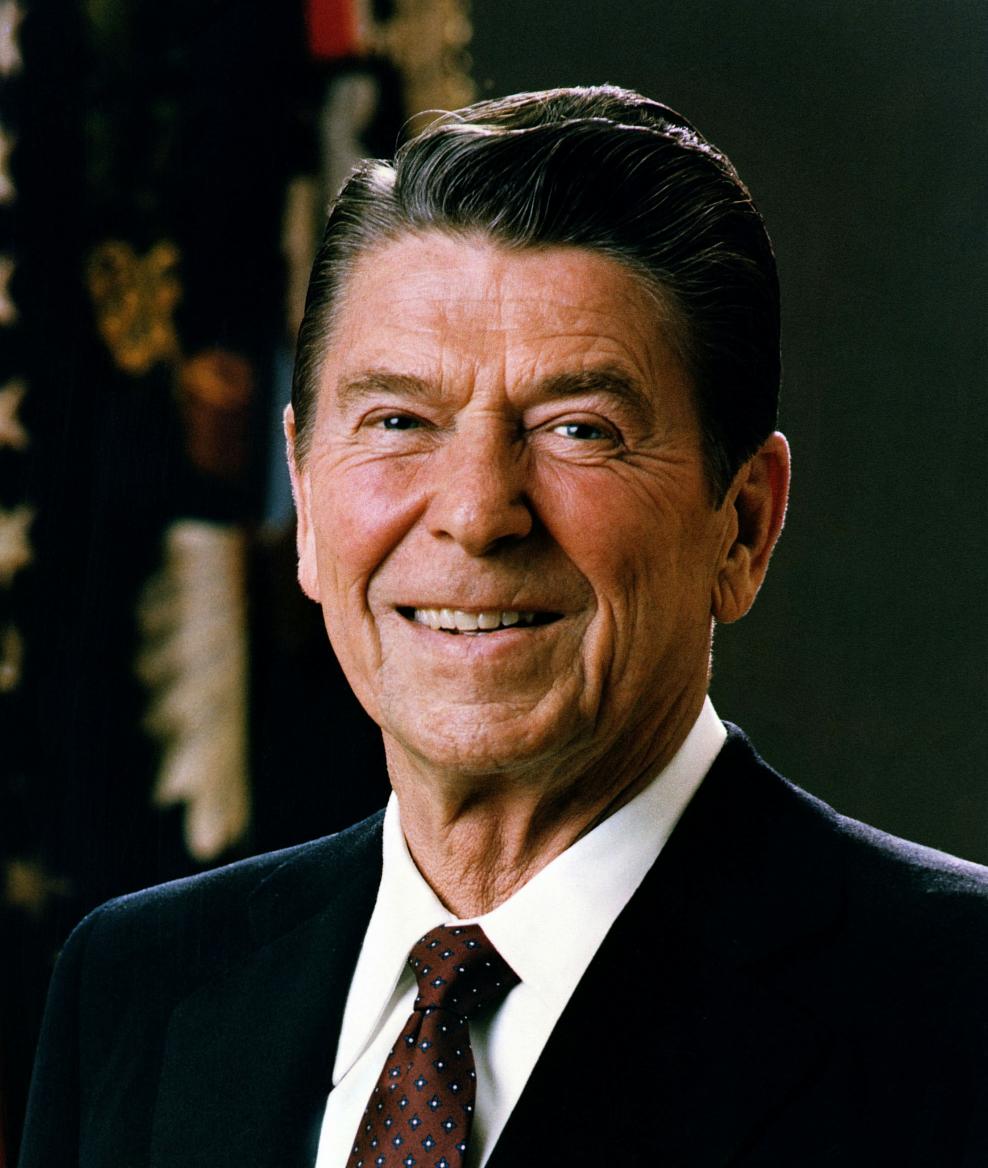
Official Portrait of President
Reagan – 1981
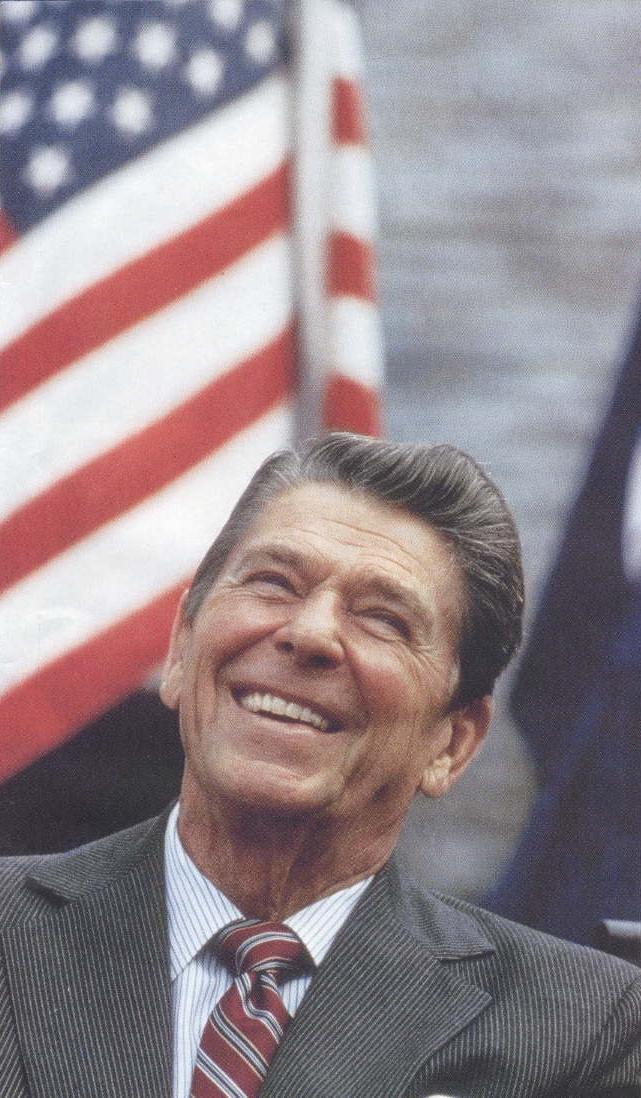
Ronald
Reagan
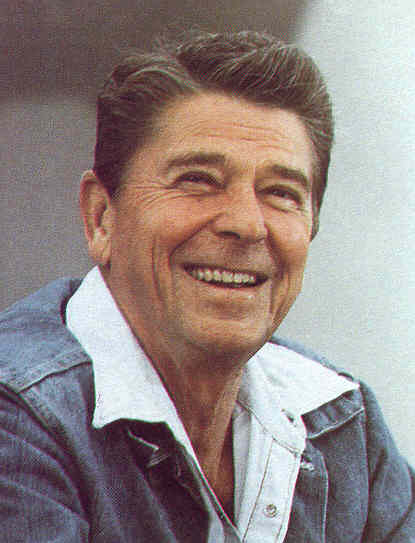
Ronald
Reagan
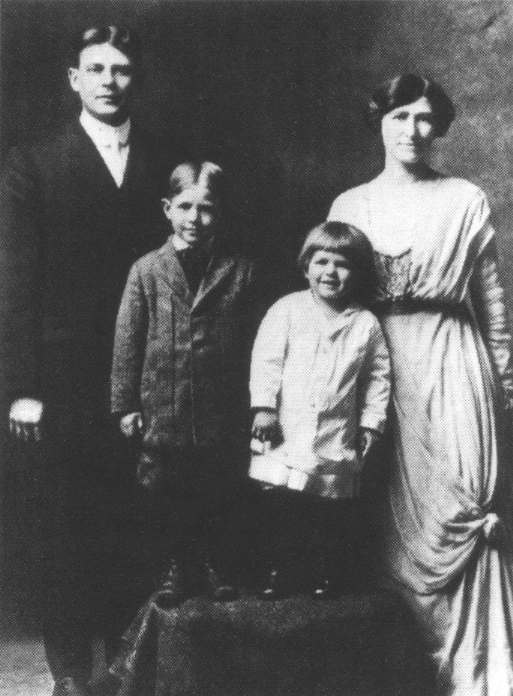
Reagan and his father Jack,
older brother Neil, and mother Nelle – ca. 1914
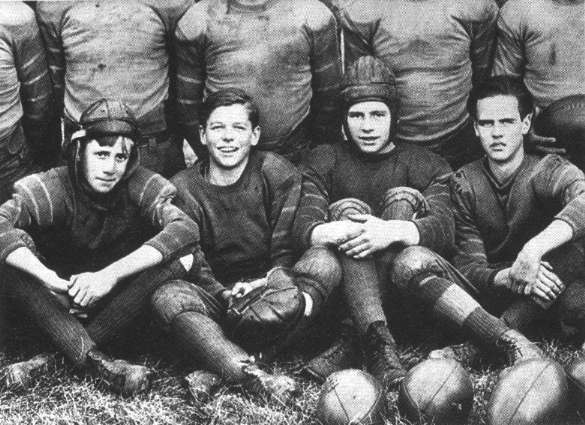
Reagan (2nd from left) with
his school football team
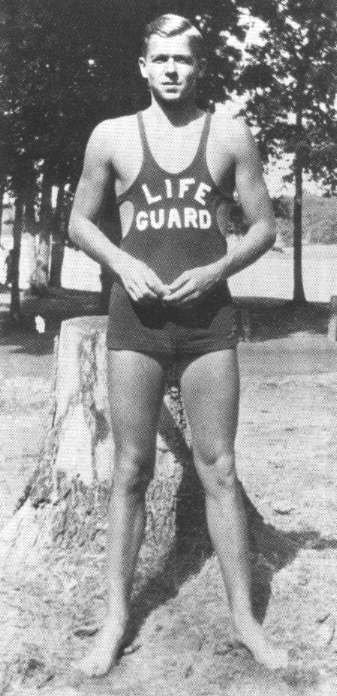
Reagan as a lifeguard on the Rock River in 1928
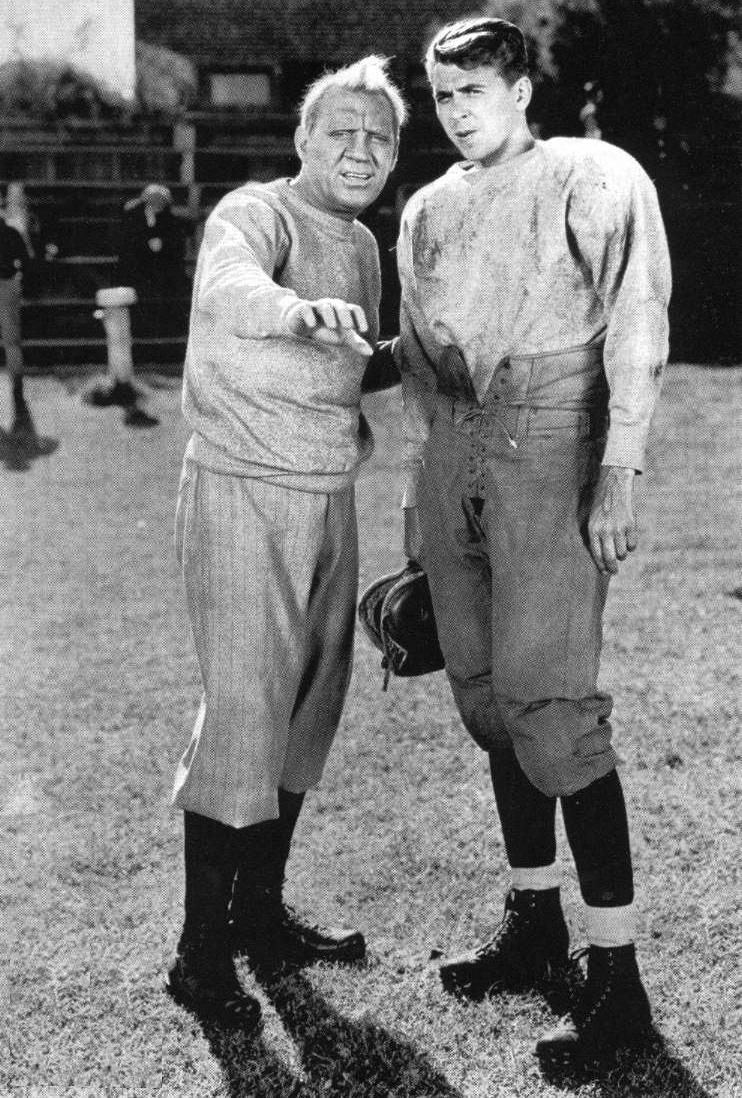
As the "Gipper" in Knute
Rockney All American – 1940
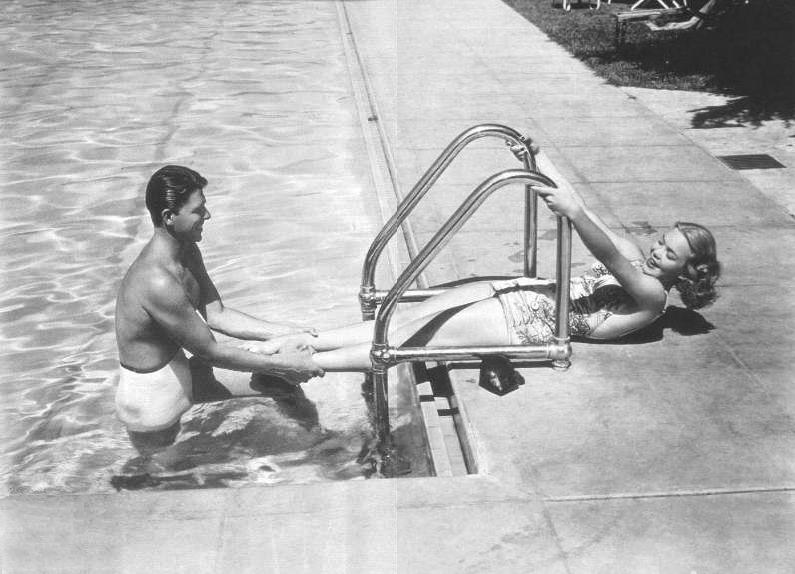
Reagan and 1st wife, actress
Jane Wyman in 1940
(married in 1940; divorced in 1948)
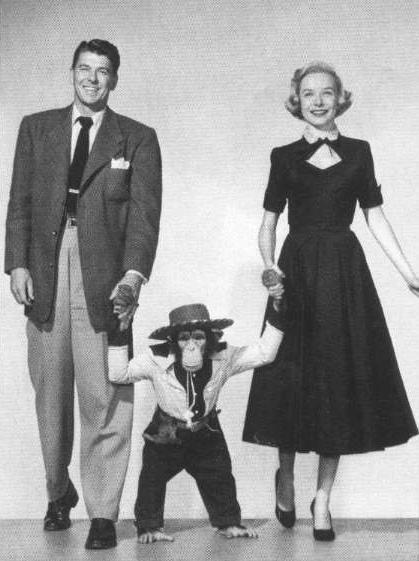
Reagan and Diana Lynn in
Bedtime
for Bonzo – 1951
He becomes a big name in
national politics with his win of the California governorship in 1966
(He is California Governor
from 1967 to 1975)
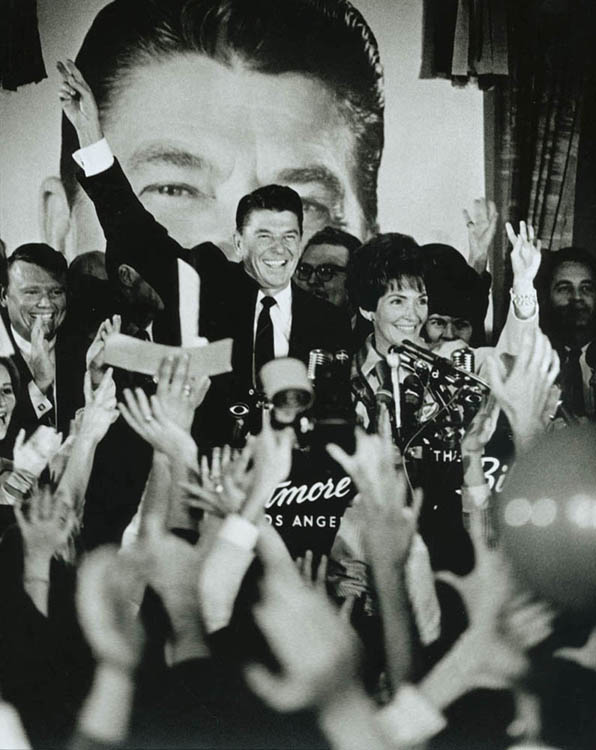
Reagan and his wife Nancy at his win of the California governor's race – Nov. 8, 1966
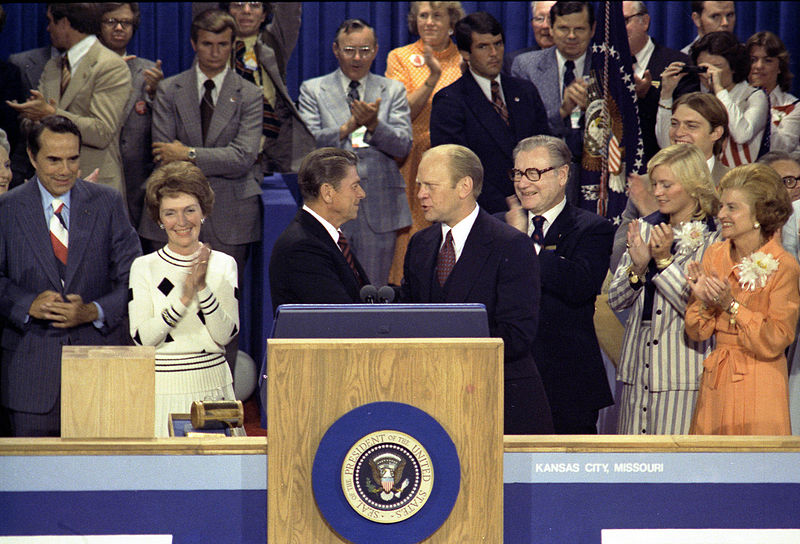
Ronald Reagan on the podium
with Gerald Ford at the 1976 Republican National Convention
after narrowly losing the
presidential nomination – 19 August 1976
1980 Republican National Convention - Reagan nominated as the Republican presidential candidate
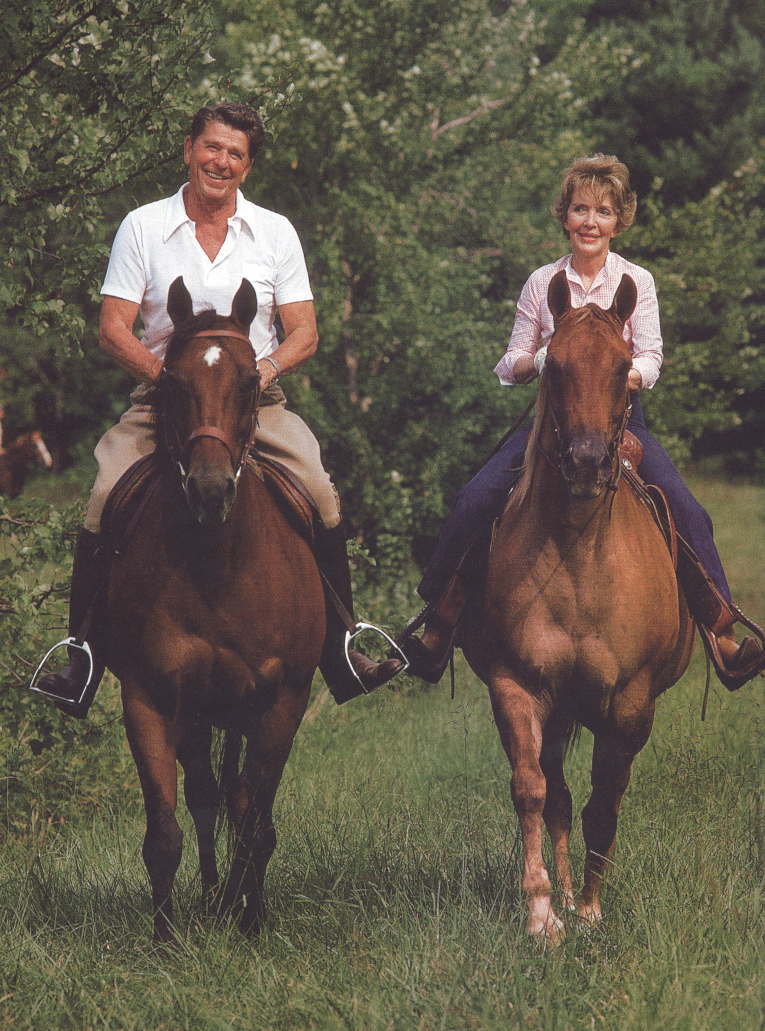
President and Nancy Reagan
on horseback

|
|
Just barely two months in office, Reagan and three others were shot and wounded (his Press Secretary James Brady quite badly) by John Hinckley, Jr., as the President and his team were leaving a luncheon meeting in Washington, D.C. The insane Hinkley performed the shooting in the belief that this action would bring him the attention he craved from actress Jodie Foster. Reagan suffered a punctured lung and internal bleeding, and was rushed to the George Washington University Hospital. At this point the Twenty-fifth Amendment on presidential succession went into effect, with Vice President Bush taking on temporary presidential authority. Reagan recovered in the hospital rather quickly (twelve days before returning to the White House), including his sense of humor. But Brady suffered brain damage and was permanently paralyzed. Ultimately Hinckley was found innocent by reasons of insanity and consigned to a psychiatric ward (until 2015). And overall, the Americans rather generally swung together in unity behind the President, his popularity ratings hitting nearly 75 percent at that point.
|
An assassination attempt on his life early in his Administration
(March 30, 1981)
Reagan hit by gunman
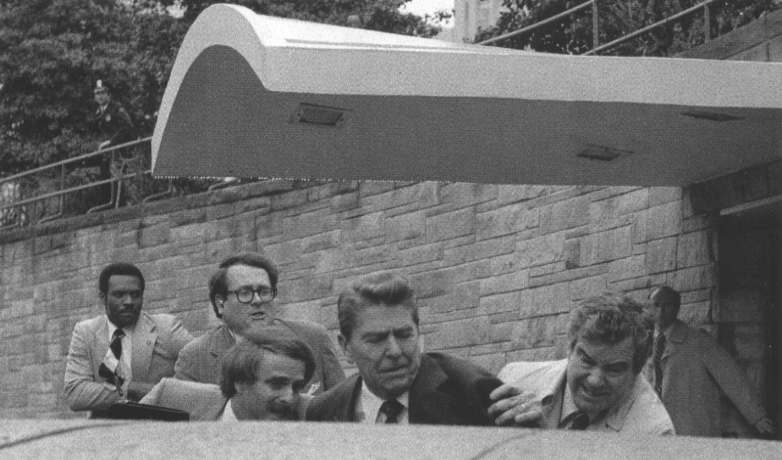
President Reagan and Press
Secretary James Brady shot
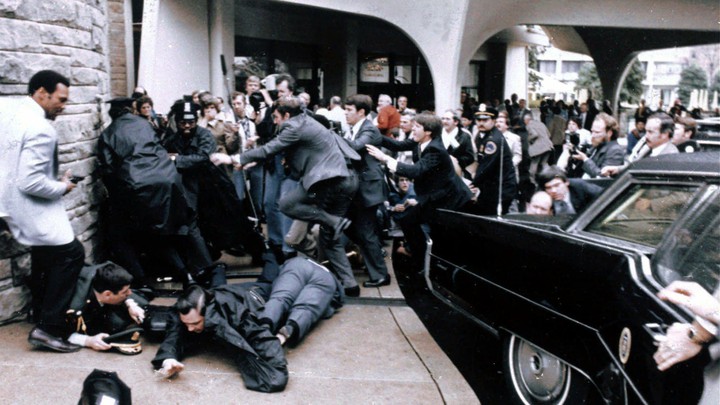

|
|
Almost immediately Reagan gave a clear demonstration of how things had changed. When the members of the Professional Air Traffic Controllers union (PATCO) went on strike in August of 1981, threatening to shut down the nation's airports, Reagan worked some substitute arrangements for air traffic control, cut back flights to about 50 percent of the normal schedule, and fired 11,000 of the air traffic controllers who refused to return to work. Never had a president taken on a union like that and won. Ultimately this misadventure broke the union and sent the message to other unions that Reagan would shut them down as well if they ever threatened the economic health of the country. In part this was his response to the huge inflation in prices and wages rocking the country. In part it was a demonstration that the White House was back in charge of the country. It was soon obvious that the majority of Americans clearly approved of Reagan's strong hand.
|
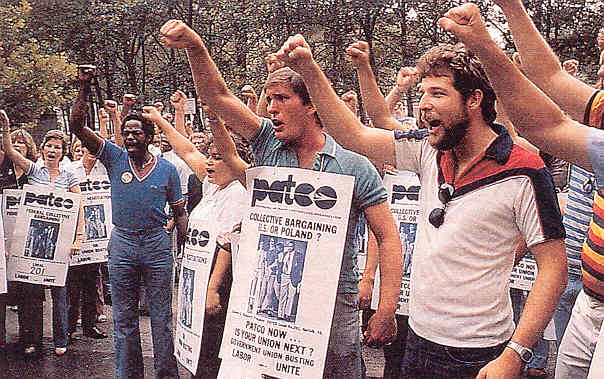
A strike by public air traffic
controllers – broken by President Reagan.
President Reagan and the
Press
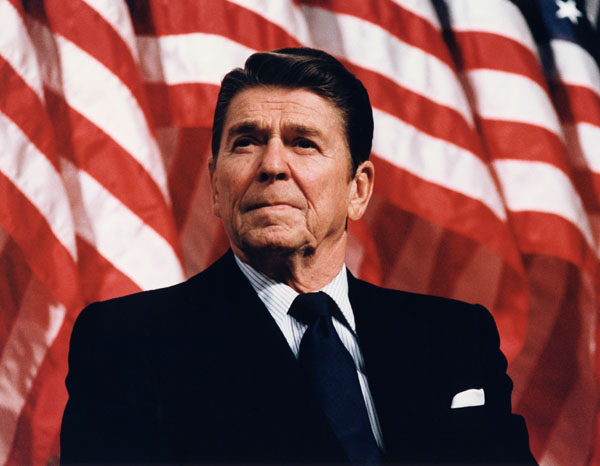
No more apologies for America
being the great power that it is!
President Reagan speaking
at a rally for Senator Durenberger

|
|
Although America would play no real role in the
war which broke out between Argentina and Great Britain in early April
of 1982 (lasting ten weeks), it would have a strong impact on America
in the way that the military resolve under the British Prime Minister
Margaret Thatcher impressed not only Reagan (he and Thatcher would
become close friends) but also the American people, who were
increasingly supportive of exactly that same kind of leadership: again,
"tough" replacing "nice." The Argentinian military, which was facing increasing opposition to its dictatorial rule from the Argentinian population, gambled on the idea that seizing the British-held Falkland Islands (300 miles offshore from the southern tip of Argentina in the South Atlantic) would restore Argentinian national pride and Argentinian support of the military rulers of their country. The gamble did not work. The Argentinian military found itself up against the "Iron Lady" Thatcher, who immediately sent the British navy and army to drive the Argentines off the islands. An undeclared war broke out, with a British submarine sinking the Argentinian ship General Belgrano, with a serious loss of life, and the return of the Argentinian navy back to port. But the British suffered naval losses no less, when a number of their ships were sunk by Argentinian planes. But step by step British troops were able to overcome Argentinian defenses and finally in June, with the British taking of the key city of Stanley, the Argentines surrendered. The outcome of the war was the collapse finally of Argentina's military dictatorship – with the restoration of democracy via the Argentinian general election of 1983. And in Britain, not surprisingly, there was a huge rise in the popularity of Thatcher and the Conservative Party.
|
The British-Argentinian Falkland Islands War – Spring 1982
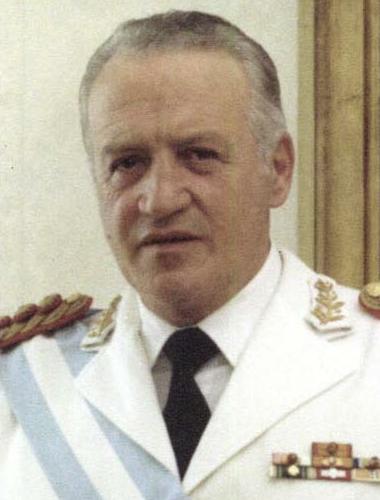
General Leopoldo
Galtieri
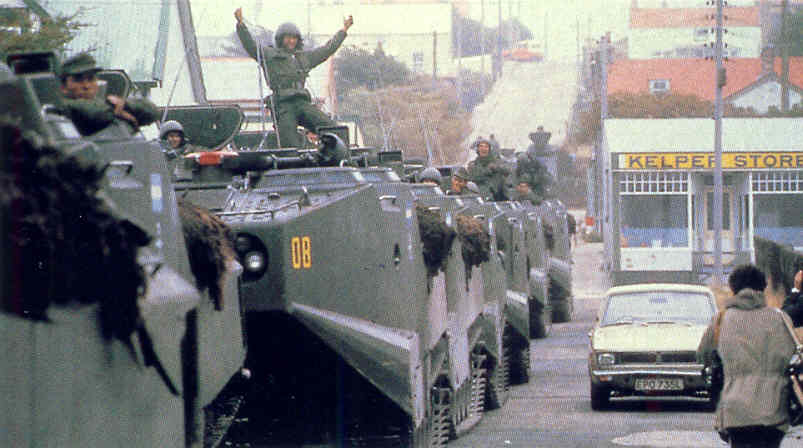
Argentinian tanks entering
Port Stanley at the start-up of the Falklands War – April 1982
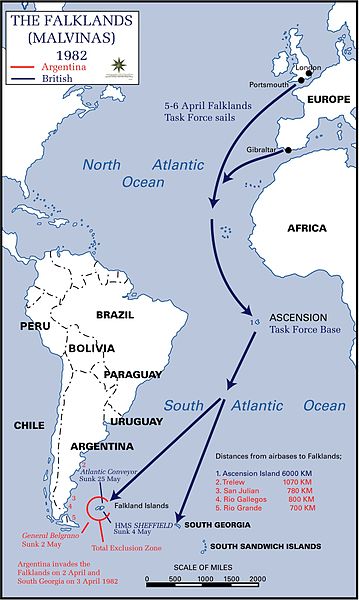
Wikipedia – "Falklands War"
The battle at sea will be fierce and both sides will suffer huge naval losses
... but the British will not yield to the Argentinians
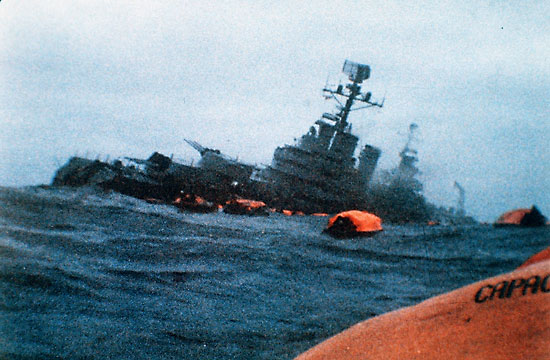
The Argentine cruiser ARA
General Belgrano lists heavily to port in the Atlantic Ocean,
after being attacked by
a British submarine during the Falklands Conflict. It later sank.
( May
2, 1982)
323 members of Belgrano´s
crew died in the incident.
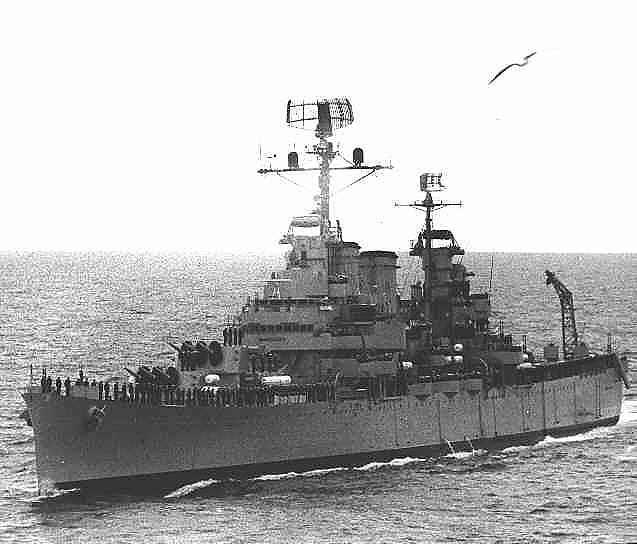
On 4 May, two days after
the sinking of Belgrano, the British lost the Type 42
destroyer HMS
Sheffield.
The ship was abandoned several
hours later, gutted
and deformed by the fires that continued to burn for
six more days.
The attack on Sheffield
resulted in 20 British dead.
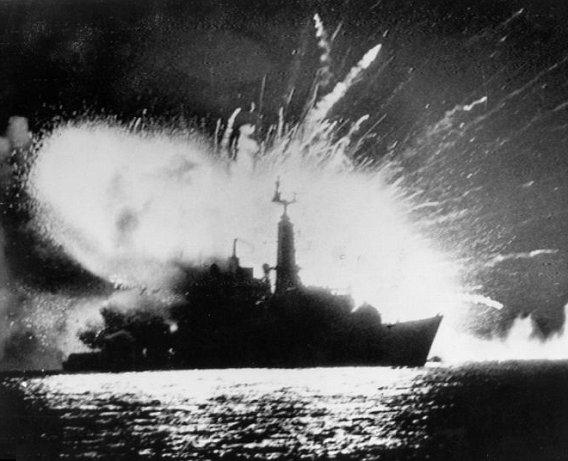
British Royal Navy
frigate HMS Antelope explodes in the bay of San Carlos off East
Falkland (May 24). Her crew had been evacuated
from the ship before the explosion
occurred). Also HMS Ardent (May
22) and HMS Coventry (May 25) were sunk, as
was MV Atlantic Conveyor
(May
25) with a cargo of helicopters and supplies.
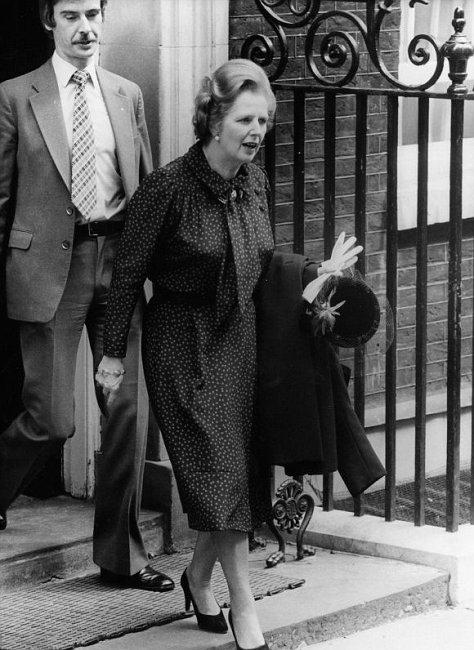
British Prime Minister Margaret
Thatcher leaving 10 Downing Streeet
after announcing that British
troops had landed in the Falkland Islands
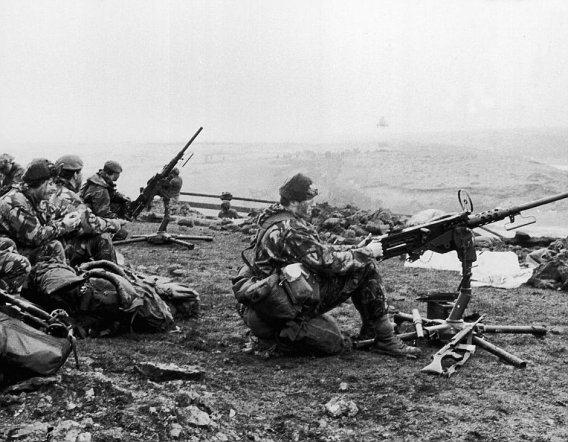
British soldiers in the Falkland Islands
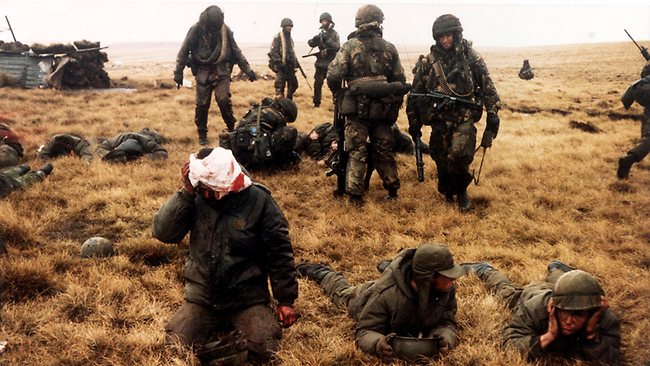
Argentinian troops captured or killed in battle
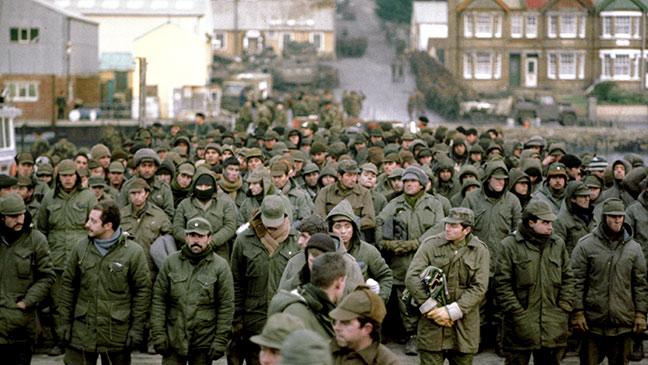
Argentinian troops held prisoner in Port Stanley
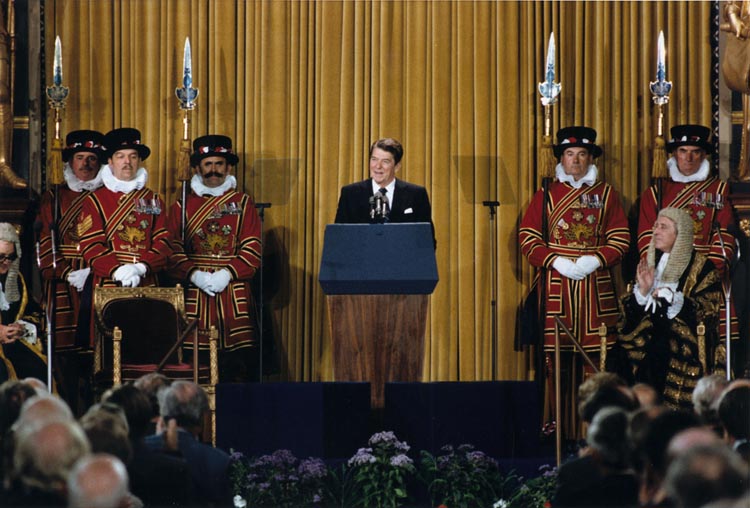
President Reagan addressing
British Parliament at the Palace of Westminster –
June 8, 1982.
Reagan predicts that
Marxism-Leninism
will be left on the "ash-heap of history"
(no more "Detente"!)
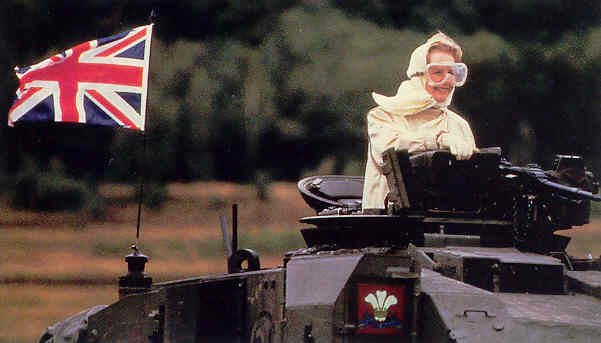
The "Iron Lady" Margaret Thatcher on NATO maneuvers – 1986

|
|
When Israel suddenly attacked Lebanon in June of 1982 in order to take out the Palestinian Liberation Organization (PLO) that had taken refuge there, the attack so destabilized Lebanon that it fell into another round of vicious civil war – Christians of all sorts and Muslims of all sorts going at each other. The murder of civilians was so shocking that the United Nations called for an international peace-keeping force to be sent to Lebanon to separate the warring factions. In August the U.N. force arrived, including with it 800 American troops. But the violence only increased. In September Christian Arab allies of Israel surrounded Palestinian refugee camps and proceeded to kill their inhabitants, men, women and children. America, France and Italy, the heart of the U.N. force, increased their troop numbers substantially to try to bring an ever-worsening situation under control. It seemed to be working. But the following year (1983) the wrath of several of the Arab military factions was turned on these international referees, whose intervention was obviously unwanted by terrorist groups intent on killing fellow Arabs. Also the Syrians chose this moment to invade Lebanon, merely adding to the chaos. The attacks on the international presence increased as the year progressed, until in October a well-planned truck-bomb attack on the U.N. barracks killed 241 American and 58 French soldiers. Reagan attempted to hang tough despite this huge setback. But by February of 1984 he was ready to admit failure in the effort to stabilize the Lebanese situation, and began pulling U.S. troops out of Lebanon. Actually, the ability of a President to admit defeat and pull back from a situation, rather than wade deeper into it in the hopes of somehow rescuing some degree of honor from the mess (as often happens with weak or ignorant leaders), turned out not at all to have hurt Reagan's standing with the "Silent Majority." It seemed instead to have encouraged them to believe that they had unusual political wisdom reigning in the White House.
|
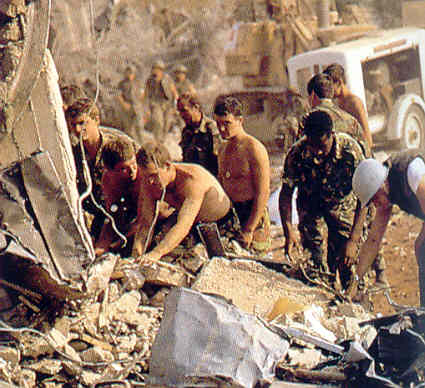
US Marine HQs bombed in
Lebanon
by Muslim fundamentalists – October 1983.
241 Americans were killed; a French base was simultaneously bombed:
58 Frenchmen were
killed)
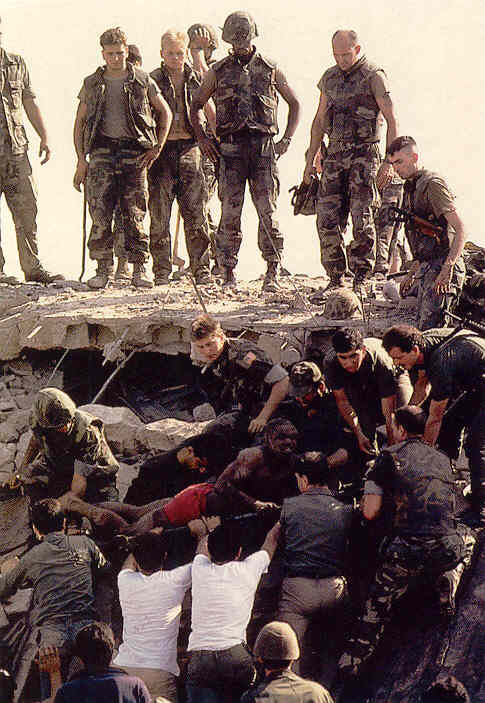
American soldier being pulled
from the rubble of a terrorists blast in Beirut, Lebanon
October
1983

|
|
On the other hand, as an old-style warrior, Reagan responded boldly to a Marxist military coup in the tiny Caribbean country of Grenada by sending troops to the island in October of 1983 (just two days after the horrible barracks attack in Lebanon), to restore Grenada to its old constitutional order. From the perspective of American national interest, even though Carter had as an act of "anti-imperialism" officially ended American control of the Panama Canal, the Canal was still a very important strategic link for America's Atlantic and Pacific fleets. Having a Communist regime, and thus, like Cuba, a Russian puppet, situated on an island located along the sea route leading to the Canal was totally unacceptable. Also, even though the American invasion was requested by the neighboring countries and the governor general of the island, the invasion brought an outcry from the loud and highly outraged "anti-imperialist" sector of American politics (and the world). However, the success of the American troops was swift – and soon it became apparent that again the majority of Americans approved of Reagan's decisive action. The United Nations General Assembly voted a strong protest against the American action. But even Reagan's unblinking disregard of the United Nations' rebuke served to put the world on notice that the U.S. President was not a person to be intimidated by "world public opinion." Not surprisingly, the world quickly got over its feelings about the matter.
|
Reagan lands US marines in
the Caribbean island of Granada when it looks
as if it might
become another outpost of Communism
– 1983
Reagan and Dominica Prime Minister Eugenia Charles
discussing Grenada – 1983
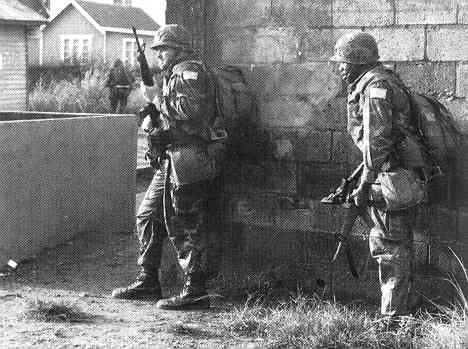
U.S. Marines in Grenada -
1983
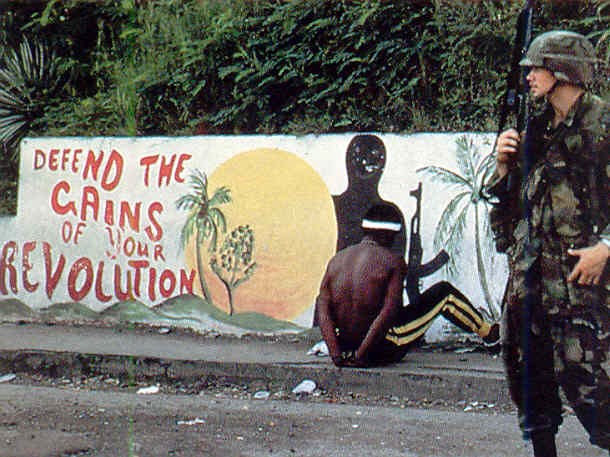
A US Marine in St. George's
Grenada with captured Grenadian soldier – October 1983
That same toughness extends to the US presence at the UN
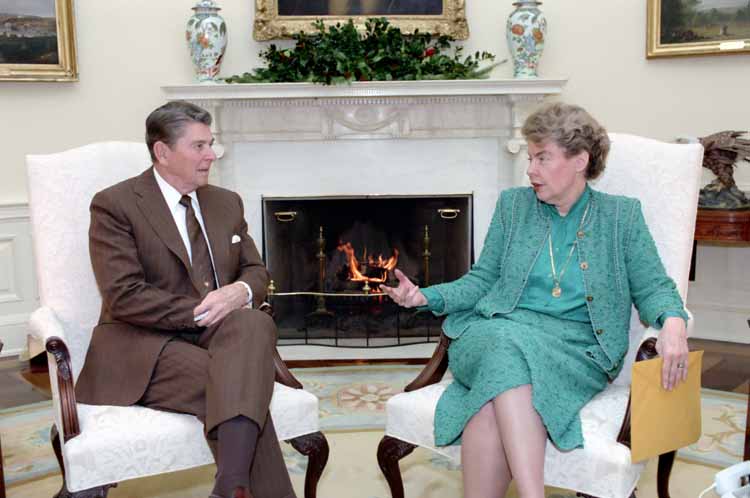
President Reagan and his
tough US Ambassador to the UN, Jeane Kirkpatrick – 11 December
1984.
A dozen years earlier, she was one of my professors and then ultimately one of my three
doctoral dissertation mentors at Georgetown University ... very, very supportive of my work!


 Miles
H. Hodges
Miles
H. Hodges